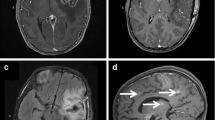Abstract
In this study, the clinical progression of experimental infection of llamas ( Lama glama) with Parelaphostrongylus tenuis is described. The onset and characterization of neurologic deficits and changes in the hematology, serum biochemical, and cerebrospinal fluid (CSF) in affected llamas are compared before and after appearance of clinical signs. Sixteen apparently healthy, male llamas (median age; 12 months) were used. Five llamas were maintained as uninfected controls, and five, three, and three llamas were orally inoculated with five, ten, and 25 third-stage larvae (L3) of P. tenuis, respectively. The onset, degree, and characterization of neurologic deficits were recorded. Hematology, serum biochemistry, and CSF were analyzed before exposure (Pre) and after neurologic signs appeared (Post). Necropsy and worm recovery from the central nervous system (CNS) were also carried out to confirm infection. Exposure of llamas to 25 L3 of P. tenuis orally resulted in consistent infection and development of disease. Overall, ten of the 11 animals exposed to P. tenuis L3 developed varying degrees of neurologic signs between 45 and 82 days post-exposure (dpe). P. tenuis was recovered from the CNS of seven of the 11 exposed llamas. Neurologic signs progressed from ataxia to paresis, and eventually paralysis. In the hematologic and serum biochemical analyses, only eosinophil count was significantly elevated in the post-exposure samples in the infected groups. Protein was significantly elevated and Pandy test was positive in CSF of infected llamas. This study comprehensively describes the clinical progression of P. tenuis infection in llamas that will prove helpful in future studies to investigate the possibilities of developing antemortem diagnostic tests and new therapeutic programs.
Similar content being viewed by others
References
Anderson RC (1963) The incidence, development, and experimental transmission of Pneumostrongylus tenuis Dougherty (Metastrongylidae: Protostrongylidae) of the meninges of the white-tailed deer (Odocoileus virginianus borealis) in Ontario. Can J Zool 41:775–792
Anderson RC (1965) The development of Pneumostrongylus tenuis in the central nervous system of white-tailed deer. Pathol Vet 2:360–379
Anderson RC, Prestwood AK (1981) Lungworms. In: Davidson WR, Hayes FA, Nettles VF, Kellogg FE (eds) Diseases and parasites of the white-tailed deer. Tall Timbers Research Station, Tallahassee, Florida, pp 266–317
Baum KH (1994) Neurologic diseases of llamas. Vet Clin N Am Food Anim Pract 10:383–390
Baumgartner W, Zajac A, Hull BL et al (1985) Parelaphostrongylosis in llamas. J Am Vet Med Assoc 187:1243–1245
Brown TT, Jordan HE, Demorest CN (1978) Cerebrospinal parelaphostrongylosis in llamas. J Wildl Dis 14:441–444
Duffy MS, Burt MDB (2002) Identification of antigens with potential for immunodiagnosis of Parelaphostrongylus tenuis and Elaphostrongylus cervi infections in red deer (Cervus elaphus elaphus). J Parasitol 88:587–593
Foreyt WJ, Rickard LG, Dowling S (1991) Experimental infections of two llamas with themeningeal worm (Parelaphostrongylus tenuis). J Zoo Wildl Med 22:339–344
Fowler ME, Zinkl JG (1989) Reference ranges for hematologic and serum biochemical values in llamas (Lama glama). Am J Vet Res 50:2049–2053
Lankester MW, Anderson RC (1968) Gastropods as intermediate hosts of Pneumostrongylus tenuis Dougherty of white-tailed deer. Can J Zool 46:373–383
Ogunremi O, Lankester M, Kendal J et al (1999) Serological diagnosis of Parelaphostrongylus tenuis infection in white-tailed deer and identification of a potentially unique parasite antigen. J Parasitol 85:122–127
Platt TR (1989) Gastropod intermediate hosts of Parelaphostrongylus tenuis (Nematoda: Metastrongyloidea) from northwestern Indiana. J Parasitol 75:519–523
Rickard LG, Smith BB, Gentz EJ (1994) Experimentally induced meningeal worm (Parelaphostrongylus tenuis) infection in the llama. J Zoo Wildl Med 25:390–402
Summers BA, Cummings JF, de Lahunta A (1995) Veterinary neuropathology. Mosby-Year Book Inc, MI, pp 160–171
Thrall MA (2004) Veterinary hematology and clinical chemistry. Lippincott Williams & Wilkins, PA
Wasel SM, Samuel WM, Crichton V (2003) Distribution and ecology of meningeal worm, Parelaphostrongylus tenuis (Nematoda), in northcentral North America. J Wildl Dis 39:338–346
Acknowledgments
We thank Mrs. Lynda Lum and Donna Griffey for their excellent technical help. We also would like to thank professors, technicians, staff, and students at Purdue University, Jordan University of Science and Technology and St. Matthews University for their support and continuous encouragement. Funding for this project was provided in part by a grant from the Morris Animal Foundation (DOOLA-13; T. Qureshi, M. Levy,).
Author information
Authors and Affiliations
Corresponding author
Additional information
Communicated by C. Gortázar
Rights and permissions
About this article
Cite this article
Ismail, Z.B., Levy, M., Qureshi, T. et al. Clinico-pathological findings and cerebrospinal fluid analysis in llamas (Lama glama) experimentally infected with the meningeal worm Parelaphostrongylus tenuis . Eur J Wildl Res 57, 175–181 (2011). https://doi.org/10.1007/s10344-010-0411-z
Received:
Revised:
Accepted:
Published:
Issue Date:
DOI: https://doi.org/10.1007/s10344-010-0411-z




